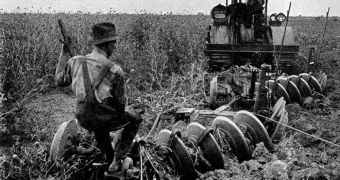The global food demand could double by 2050, highlights a report published in the journal Proceedings of the National Academy of Sciences (PNAS). This phenomenon can trigger various harmful consequences for human development, the environment and an entire list of creatures that might go extinct.
As we speak, the agricultural field is under a lot of pressure. In order to satisfy the demand of 7 billion hungry people, farmers rely on unsustainable practices, responsible for a growing amount of carbon dioxide and nitrogen.
These two man-nourished factors are powerful enough to wipe several species off the face of the earth, according to the National Science Foundation.
The key answer to this problem appears to be technology developed by nations with an increased financial support, adapted to the needs and demand of poor inhabitants from developing countries.
Also, experts take into consideration cleaning land and increasing the productivity of the already exploited surfaces, or both methods, for optimal results.
The initiative to feed more and more people as the food demand increases will translate into a higher level of greenhouse gas emissions, unless agriculture will be guided to the right path to sustainability.
At this point in time, what is feeding us is also partially destroying us, since one third of the total amount of air pollution comes from global agriculture.
All in all, knowledge and proper technological transfer from the rich nations to the poor ones might solve the puzzle of an eco-conscious agricultural system.
A second key element in the entire equation would be represented by economic and political incentives that would support the implementation of much-needed improvements.
The financially-challenged nations are trying to survive while putting the land in great danger. If such countries preserve the same trajectory, they would be able to clear up a surface larger than the United Stated, representing two and a half billion acres, by 2050.
Also, experts affirm that once the rich regions will help the poor, the know-how transfer will reduce the compromised land to only half a billion acres.
The poor have a lot to learn from the rich, since their farming techniques appear to be up to 300% more efficient than their empiric correspondents.

 14 DAY TRIAL //
14 DAY TRIAL //